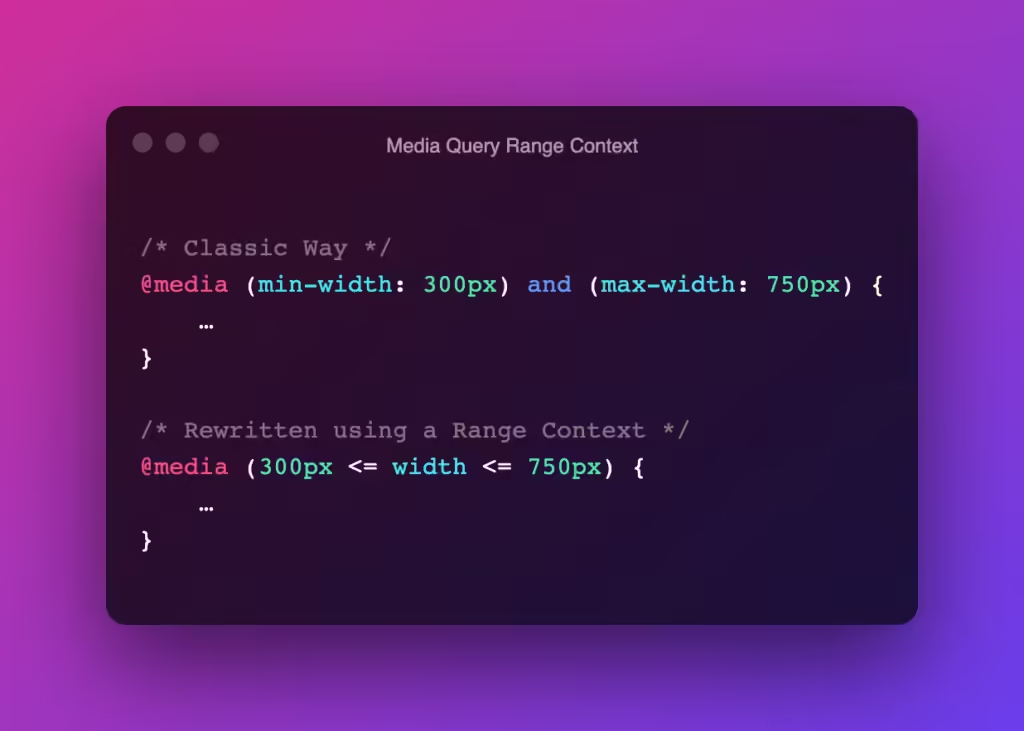CSS has always been a core tool for web designers, providing a wide range of selectors and properties to create visually engaging, responsive websites. Now, with the introduction of CSS Level 4 selectors, designers have even more flexibility and precision in styling web pages. These new selectors open up a world of possibilities for targeting elements, making it easier than ever to create complex and dynamic layouts.
In this article, we’ll explore some of the key CSS Level 4 selectors, discuss how they can simplify design tasks, and show how they can help you create more efficient and engaging web designs.
1. The :is() Pseudo-Class: Simplifying Complex Selectors
One of the most exciting additions in CSS Level 4 is the :is() pseudo-class, which allows designers to simplify complex selectors.
- Why It’s Useful: Instead of writing multiple selectors for elements with similar styling, you can now group them with
:is(). For example, instead of repeating styling for.menu-item,.nav-link, and.footer-link, you can target them all at once. - Example:cssCopy code
:is(.menu-item, .nav-link, .footer-link) { color: #333; font-size: 16px; }
This results in cleaner code and less repetition, making your CSS easier to maintain.
2. The :where() Pseudo-Class: Like :is() but with Lower Specificity
Similar to :is(), the :where() pseudo-class allows for targeting multiple elements. However, :where() applies with no specificity to the styles inside it, making it easier to override later.
- Why It’s Useful: When you need to apply base styling without affecting specificity,
:where()is ideal. This is especially helpful for large projects where overrides may need to be applied further down the line. - Example:
:is(.menu-item, .nav-link, .footer-link) {
color: #333;
font-size: 16px;
}This approach allows for greater flexibility and cleaner cascading styles.
3. The :not() Selector: Exclude Specific Elements
The :not() selector has been updated in CSS Level 4, allowing you to use multiple arguments within it. Now, you can exclude multiple elements at once without complicated chaining.
- Why It’s Useful: This enhancement saves time and reduces the amount of CSS code needed to exclude specific elements from styling.
- Example:
:where(.header, .sidebar, .footer) {
margin: 0;
padding: 20px;
}This flexibility in exclusion allows designers to apply styles more precisely.
4. The :nth-child(An+B of S) Selector: Target Specific Patterns
The :nth-child(An+B of S) selector expands on the existing :nth-child() functionality by allowing you to target elements within a specific scope, such as certain children within a particular class.
- Why It’s Useful: This is especially handy for grid layouts or lists where you need complex styling patterns.
- Example:
p:not(.highlight, .emphasis) {
color: #666;
}With this selector, designers can apply complex layout adjustments and create sophisticated design patterns with ease.
5. The :has() Selector: Style Parents Based on Child Elements
One of the most eagerly awaited selectors in CSS Level 4, :has() allows designers to style parent elements based on the presence of specific child elements. This was previously impossible without JavaScript.
- Why It’s Useful: The
:has()selector can transform design logic by allowing dynamic changes to parent styles. For instance, you can change the appearance of a card component when it contains an image. - Example:
.gallery :nth-child(2n of .image) {
border: 2px solid #ccc;
}This addition reduces the need for JavaScript, making designs faster and more accessible.
6. The :focus-within Selector: Enhancing Accessibility
Although :focus-within isn’t brand new, it plays an essential role in creating accessible web designs. This selector applies styles to a parent element when any child element within it receives focus.
- Why It’s Useful:
:focus-withinis invaluable for keyboard navigation and accessibility improvements. It allows designers to highlight entire sections, such as form fields or interactive panels, when they are being used. - Example:
.card:has(img) {
background-color: #f5f5f5;
padding: 20px;
}This small but effective selector change helps users navigate and interact with content more intuitively.
7. The ::part() and ::slotted() Selectors: Styling Web Components
Web components are becoming more popular, and CSS Level 4 introduces the ::part() and ::slotted() selectors, which make it easier to style them.
- Why It’s Useful:
::part()and::slotted()allow designers to apply styles within the shadow DOM. This ensures that even encapsulated web components can maintain a consistent look with the rest of the page. - Example:
.form-group:focus-within {
border-color: #007bff;
background-color: #e9f7fe;
}These selectors support better integration of web components, opening up exciting possibilities for modular design.
8. Practical Use Cases for Designers
The new CSS Level 4 selectors offer several benefits for designers:
- Easier Maintenance: With selectors like
:is()and:where(), writing and maintaining CSS is easier and more efficient. - Enhanced Interactivity: The
:has()selector and improved:not()functionality provide more options for dynamic styling without needing JavaScript. - Greater Accessibility: Selectors like
:focus-withinmake it simpler to build accessible interfaces that adapt to user interactions.
By using these CSS Level 4 selectors, designers can create more engaging, user-friendly web pages with less code, making designs more adaptable and powerful.
Internal Links
For more CSS insights and modern design tips, explore these posts on Droidmate Blog:
External Links
Conclusion
CSS Level 4 selectors mark a significant advancement for web designers. By utilizing these new tools, you can simplify code, enhance accessibility, and introduce dynamic interactions with ease. If you haven’t yet explored these powerful new features, now is the perfect time to start experimenting and elevate your CSS skills for modern web design.


